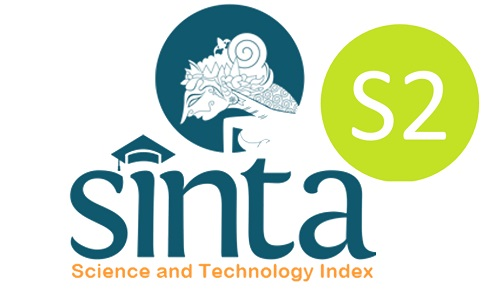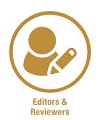WOMEN AND LEADERSHIP IN ISLAMIC HIGHER EDUCATION IN INDONESIA
DOI:
https://doi.org/10.22373/ej.v1i2.27Keywords:
women, leadership, Islamic Higher EducationAbstract
In Indonesia, the issue of women in leadership position within public organizations, including in higher education, has been under scrutiny for a long time. Practices of patriarchal culture plays a significant role in the way people perceive women and their contribution have influenced the opportunity for female academics to assume senior leadership roles. Despite the increase in the number of well-educated women in higher education sector, it does not reflect in the number of women assuming leadership roles. This paper presents a brief historical account on higher education sector in Indonesia and then discusses women and leadership in higher education, with a special reference to State Islamic University Ar-Raniry Banda Aceh.Downloads
Download data is not yet available.
References
Acker, J. (2009). From glass ceiling to inequality regimes. Sociologie du Travail, 51(2), 199-217.
Altbach, P. G. (2004). The Past and future of asian university: Twenty-first century challenges. In P. G. Altbach & T. Umakoshi (Eds.), Asian universities: Historical perspective and contemporary challenges. Baltimore: The Johns Hopkins University Press.
Alvesson, M., & Sveningsson, S. (2008). Changing organisational culture: Cultural change work in progress. London: Routledge.
Buchori, M., & Malik, A. (2004). The evolution of higher education in Indonesia. In P. G. Altbach & T. Umakoshi (Eds.), Asian universities: Historical perspective and contemporary challenges. Baltimore: The John Hopkins University Press.
Carli, L. L., & Eagly, A. H. (2001). Gender, hierarchy, and leadership: An introduction. Journal of Social Issues 57(4), 629-636.
Connel, R. (2006). Glass ceiling or gendered insitution? Mapping the gender regimes of public sector worksites. Public Administration Review, 66(6), 837-849.
Eagly, A. H., & Carli, L. L. (2003a). The female leadership advantage: An evaluation of the evidence. The Leadership Quarterly, 14, 807−835.
Eagly, A. H., & Carli, L. L. (2003b). Finding gender advantage and disadvantage: Systematic research integration is the solution. The Leadership Quarterly, 14, 851-859.
Eagly, A. H., & Johannesen-Schmidt, M. C. (2001). The leadership styles of women and men. Journal of Social Issues, 57(4), 781-797.
Gunawardena, C., Rasanayagam, Y., Leitan, T., Bulumulle, K., & Dort, A.-V. (2006). Quantitative and qualitative dimensions of gender equity in Srilankan higher education. Women’s Studies International Forum, 29, 562-571.
Jones, G. W. (2009). Women, marriage and family in Southeast Asia. In T. W. Devasahayam (Ed.), Gender trends in Southeast Asia : Women now, women in the future (pp. 12-30). Singapore: Institute of Southeast Asian Studies, ISEAS
Lewis, S., & Taylor, K. (1996). Evaluating the impact of family-friendly employer policies: A case study. In S. Lewis & J. Lewis (Eds.), The work-family challenge: Rethinking employment. London: Sage.
Lubis, A. (2002). Gender gap in leadership roles in educational and political fields. In M. A. Mudzhar (Ed.), Women in Indonesian society: Access, empowerment, and opportunity. Yogyakarta: Sunan Kalijaga Press.
Morley, L. (2005). Gender equity in commonwealth higher education. Women’s Studies International Forum, 28(2), 209-221.
Murniati, C. T. (2012). Career advancement of women senior academic administrators in Indonesia: Supports and challenges (Unpublished doctoral dissertation). University of Iowa.
Newman, J. (1995). Gender and cultural change. In C. Itzin & J. Newman (Eds.), Gender, culture and organisational change: Putting theory into practice. London: Routledge.Schein, E. H. (2010). Organisational culture and leadership. San Fransisco: Jossey-Bass.
Ramsay, K., & Parker, M. (1992). Gender, bureaucracy, and organisational culture. In M. Savage & M. S. anne Witz (Eds.), Gender and bureaucracy. Oxford: Blacwell.
Robinson, K. (2009). Gender, Islam and democracy in Indonesia. New York: Routledge.
Subrahmanian, R. (2005). Gender equality in education: Definitions and measurements. International Journal of Educational Development, 25(4), 395-407.
Toma's, M., Lavie, J. M., Duran, M. d. M., & Guillamon, C. (2010). Women in academic administration at the university. Educational Management Administration & Leadership, 38(4), 487-498.
Welch, A. (2006). Blurred vision?: Public and private higher education in Indonesia. Higher Education, 54, 665–687.
Wicaksono, T. Y., & Friawan, D. (2011). Recent developments in higher education in Indonesia: Issues and challenges. In S. Armstrong & B. Chapman (Eds.), Financing higher education and economic development in east Asia. Canberra: ANU E Press.
Altbach, P. G. (2004). The Past and future of asian university: Twenty-first century challenges. In P. G. Altbach & T. Umakoshi (Eds.), Asian universities: Historical perspective and contemporary challenges. Baltimore: The Johns Hopkins University Press.
Alvesson, M., & Sveningsson, S. (2008). Changing organisational culture: Cultural change work in progress. London: Routledge.
Buchori, M., & Malik, A. (2004). The evolution of higher education in Indonesia. In P. G. Altbach & T. Umakoshi (Eds.), Asian universities: Historical perspective and contemporary challenges. Baltimore: The John Hopkins University Press.
Carli, L. L., & Eagly, A. H. (2001). Gender, hierarchy, and leadership: An introduction. Journal of Social Issues 57(4), 629-636.
Connel, R. (2006). Glass ceiling or gendered insitution? Mapping the gender regimes of public sector worksites. Public Administration Review, 66(6), 837-849.
Eagly, A. H., & Carli, L. L. (2003a). The female leadership advantage: An evaluation of the evidence. The Leadership Quarterly, 14, 807−835.
Eagly, A. H., & Carli, L. L. (2003b). Finding gender advantage and disadvantage: Systematic research integration is the solution. The Leadership Quarterly, 14, 851-859.
Eagly, A. H., & Johannesen-Schmidt, M. C. (2001). The leadership styles of women and men. Journal of Social Issues, 57(4), 781-797.
Gunawardena, C., Rasanayagam, Y., Leitan, T., Bulumulle, K., & Dort, A.-V. (2006). Quantitative and qualitative dimensions of gender equity in Srilankan higher education. Women’s Studies International Forum, 29, 562-571.
Jones, G. W. (2009). Women, marriage and family in Southeast Asia. In T. W. Devasahayam (Ed.), Gender trends in Southeast Asia : Women now, women in the future (pp. 12-30). Singapore: Institute of Southeast Asian Studies, ISEAS
Lewis, S., & Taylor, K. (1996). Evaluating the impact of family-friendly employer policies: A case study. In S. Lewis & J. Lewis (Eds.), The work-family challenge: Rethinking employment. London: Sage.
Lubis, A. (2002). Gender gap in leadership roles in educational and political fields. In M. A. Mudzhar (Ed.), Women in Indonesian society: Access, empowerment, and opportunity. Yogyakarta: Sunan Kalijaga Press.
Morley, L. (2005). Gender equity in commonwealth higher education. Women’s Studies International Forum, 28(2), 209-221.
Murniati, C. T. (2012). Career advancement of women senior academic administrators in Indonesia: Supports and challenges (Unpublished doctoral dissertation). University of Iowa.
Newman, J. (1995). Gender and cultural change. In C. Itzin & J. Newman (Eds.), Gender, culture and organisational change: Putting theory into practice. London: Routledge.Schein, E. H. (2010). Organisational culture and leadership. San Fransisco: Jossey-Bass.
Ramsay, K., & Parker, M. (1992). Gender, bureaucracy, and organisational culture. In M. Savage & M. S. anne Witz (Eds.), Gender and bureaucracy. Oxford: Blacwell.
Robinson, K. (2009). Gender, Islam and democracy in Indonesia. New York: Routledge.
Subrahmanian, R. (2005). Gender equality in education: Definitions and measurements. International Journal of Educational Development, 25(4), 395-407.
Toma's, M., Lavie, J. M., Duran, M. d. M., & Guillamon, C. (2010). Women in academic administration at the university. Educational Management Administration & Leadership, 38(4), 487-498.
Welch, A. (2006). Blurred vision?: Public and private higher education in Indonesia. Higher Education, 54, 665–687.
Wicaksono, T. Y., & Friawan, D. (2011). Recent developments in higher education in Indonesia: Issues and challenges. In S. Armstrong & B. Chapman (Eds.), Financing higher education and economic development in east Asia. Canberra: ANU E Press.
Downloads
Published
2014-05-01
Issue
Section
Article
License
Proposed Policy for Journals That Offer Open Access
Authors who publish with Englisia journal agree to the following terms:
- Authors retain copyright and grant the journal right of first publication with the work simultaneously licensed under a Creative Commons Attribution License that allows others to share the work with an acknowledgement of the work's authorship and initial publication in this journal.
- Authors are able to enter into separate, additional contractual arrangements for the non-exclusive distribution of the journal's published version of the work (e.g., post it to an institutional repository or publish it in a book), with an acknowledgement of its initial publication in this journal.
- Authors are permitted and encouraged to post their work online (e.g., in institutional repositories or on their website) prior to and during the submission process, as it can lead to productive exchanges, as well as earlier and greater citation of published work (See The Effect of Open Access).
How to Cite
WOMEN AND LEADERSHIP IN ISLAMIC HIGHER EDUCATION IN INDONESIA. (2014). Englisia : Journal of Language, Education, and Humanities, 1(2). https://doi.org/10.22373/ej.v1i2.27









